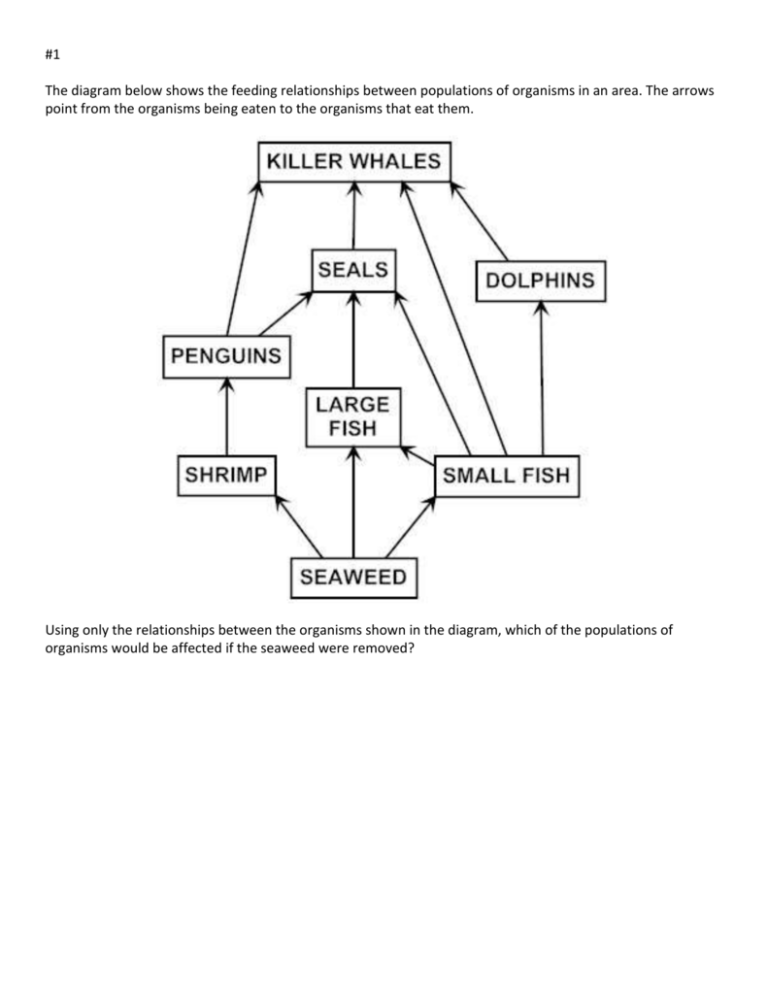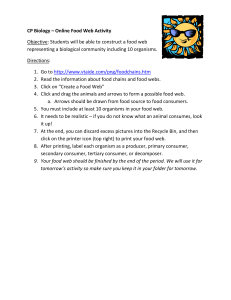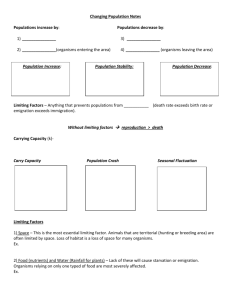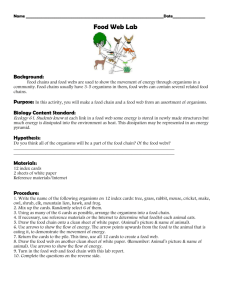#1 The diagram below shows the feeding relationships between
advertisement

#1 The diagram below shows the feeding relationships between populations of organisms in an area. The arrows point from the organisms being eaten to the organisms that eat them. Using only the relationships between the organisms shown in the diagram, which of the populations of organisms would be affected if the seaweed were removed? #2 The diagram below shows the feeding relationships between populations of plants and animals in an area. The arrows point from the organisms being eaten to the organisms that eat them. A disease kills all of the robins in this area. It does not kill any other plants or animals. If the size of the fox population stays the same, which population of organisms will increase after the robins die? Use only the relationships between the plants and animals shown in the diagram. #3 The diagram below shows the feeding relationships between populations of plants and animals in and around a pond. The arrows point from the organisms being eaten to the organisms that eat them. More people than usual go fishing at the pond this year and take a lot of the large fish out of the pond. Using only the relationships between the plants and animals shown in the diagram, describe what changes could occur in the food web. #4 The diagram below shows the feeding relationships between populations of plants and animals in an area. The arrows point from the organisms being eaten to the organisms that eat them. Most of the rabbits in this area are killed. If the number of hawks does not change, what could happen to the number of crickets and why? Use only the relationships between the plants and animals shown in the diagram. #5 A national park is home to large populations of mountain lions, deer, rabbits, and grass. Recently, park rangers decided to introduce wolves to the park. Mountain lions and wolves both eat deer and rabbits. Deer and rabbits both eat grass. If the number of deer and rabbits eaten by mountain lions stays the same, what will happen to the grass after the wolves are introduced? Use only the relationships between the plants and animals described above. #6 The diagram below shows the feeding relationships between populations of plants and animals in and around a pond. The arrows point from the organisms being eaten to the organisms that eat them. More people than usual go fishing at the pond this year and take a lot of the large fish out of the pond. Using only the relationships between the plants and animals shown in the diagram, what effect is this likely to have on the large bird population and why? #7 The diagram below shows the feeding relationships between populations of organisms in an area. The arrows point from the organisms being eaten to the organisms that eat them. Using only the relationships between the organisms shown in the diagram, which populations of organisms could be affected if the number of frogs changes? Explain why, #8 The diagram below shows the feeding relationships between populations of organisms in an area. The arrows point from the organisms being eaten to the organisms that eat them. Using only the relationships between the organisms shown in the diagram, what will happen to the number of mice if most of the frogs are killed and why? #9 The diagram below shows the feeding relationships between populations of plants and animals in and around a pond. The arrows point from the organisms being eaten to the organisms that eat them. More people than usual go fishing at the pond this year and take a lot of the large fish out of the pond. Using only the relationships between the plants and animals shown in the diagram, describe what is likely to happen and why. #10 The diagram below shows the feeding relationships between populations of plants and animals in and around a pond. The arrows point from the organisms being eaten to the organisms that eat them. More people than usual go fishing and take a lot of the large fish out of the pond. Using only the relationships between the plants and animals shown in the diagram, what is likely to happen to the number of insects and why?







